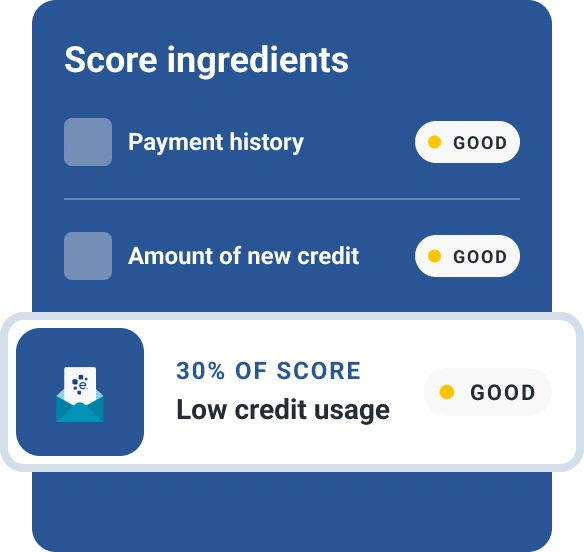Why Do Credit Card Issuers Lower Credit Limits?
Quick Answer
Credit card issuers may lower credit lines to limit risk and increase their ability to lend to new customers. You may be at risk of a credit limit decrease if you under- or over-use your card, or if the economy is in turmoil.

Credit card companies may lower your credit limit when your card is inactive or your credit usage seems risky. They may also cut credit lines when their overall credit portfolios need adjusting or when the economy is unstable.
News of a limit decrease may leave you wondering what it means for your credit—and your financial health. A credit line reduction can have credit score implications, but there are steps you can take to recover.
Why Do Credit Card Companies Lower Credit Limits?
Credit card companies generally cut credit lines to help manage their business and risk. Here are some common triggers for credit line reductions:
Your Account Is Inactive or Rarely Used
Card companies make money from credit card accounts in two primary ways: transaction fees and interest on revolving balances. Credit card issuers can only extend a finite amount of credit to their customers, so if you're not using your credit card and you don't carry a balance, your credit limit could be reduced so the company can lend to someone else.
You're Maxed Out or Overextended
On the other hand, maxing out a credit line, repeatedly going over your credit limit, missing payments or altering your spending habits may signal to the card company that you're in danger of default. A recent drop in your credit score or high credit utilization overall may also cause a card issuer to reevaluate your credit line due to risk.
Their Lending Portfolio Needs Adjustment
Card companies may recalibrate their credit lines based on regulation or their own priorities. For example, because card issuers are legally limited on how much credit they can extend, they may decide to cut credit limits to meet these risk requirements, or to improve profitability across the board.
The Economy Is in Turmoil
Major economic factors can affect how card companies view credit risk. For example, between 2020 and 2021, the COVID-19 pandemic caused widespread economic upheaval and uncertainty, which in turn caused some credit card companies to tighten their belts and cut credit lines. A similar trend occurred during the Great Recession in 2008.
How Does a Lower Credit Limit Affect Your Credit?
A lower credit line means less available credit, which can affect your credit utilization ratio if you're carrying a balance. How does credit utilization work? Say you have a $2,500 balance on a card with a $10,000 limit. Your credit utilization ratio on that card is 25%, which is generally considered to be low enough to avoid major credit score harm. Credit utilization is one of the most important factors in your credit score, so low credit utilization can help you maintain good credit.
Now suppose your card company cuts your credit limit to $5,000. If your balance stays the same, your credit utilization would climb to 50%. Credit experts suggest keeping your credit utilization under 30%, so your new utilization ratio of 50% is considered high and may lower your credit score. You're also more vulnerable if you carry a high revolving balance. If your card's balance is zero, your utilization ratio will remain unchanged—though it could limit the card's usefulness if you need to carry a balance in the future.
What to Do if Your Card Issuer Reduces Your Credit Limit
Any cut to your credit line is worth a bit of follow-up. Depending on your circumstances, consider the following options:
- Call your card company. You might want to ask why your credit line was cut and what you can do to restore it. If you can't persuade them to reverse their decision, they may offer steps you can take to increase your credit line in the future.
- Open a new card or personal loan if you need the credit. If you were counting on the available credit, consider replacing your lost credit line with a new card or personal loan. Experian's card comparison tool can help match you with options based on your credit score.
- Ask for a credit limit increase on your other cards. Requesting a credit line increase on one of your other existing cards can be a good way to maintain credit flexibility.
- Pay down balances. If you can afford to do so, offset the hit to your credit utilization by paying down your revolving balances.
- Carry on and focus on the future. Don't need the credit right away? Consider just sitting tight and waiting. If your line was cut due to inactivity, try using your card more often. That said, don't finance large purchases solely with the goal of keeping your credit line. Making a few small purchases a few months and immediately paying them off could be enough to show a card issuer that you're actively using the card.
Keep Your Credit Clean and Your Card Active
If a credit limit reduction has caused your credit utilization to take a hit, work on paying off your remaining debt to bring it back into line. Make your monthly debt payments on time to avoid missing a payment, which can really harm your credit. Apply for new credit if you need it, but be strategic: Avoid causing more hard inquiries into your credit than is necessary.
Though it's hard to eliminate the risk entirely, you can reduce the chances of having your credit lines cut by using your cards regularly and responsibly, and maintaining good credit practices across the board. You can review your credit score and stay on top of changes to your credit file with free credit monitoring from Experian.
Don’t apply blindly
Apply for credit cards confidently with personalized offers based on your credit profile. Get started with your FICO® Score for free.
See your offersAbout the author
Gayle Sato writes about financial services and personal financial wellness, with a special focus on how digital transformation is changing our relationship with money. As a business and health writer for more than two decades, she has covered the shift from traditional money management to a world of instant, invisible payments and on-the-fly mobile security apps.
Read more from Gayle

